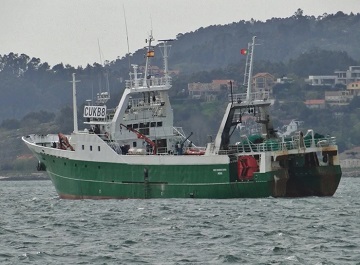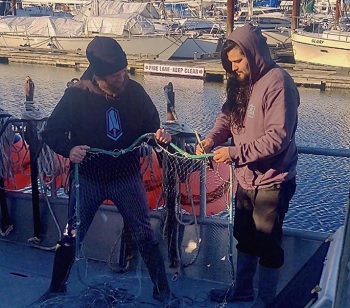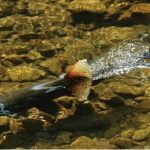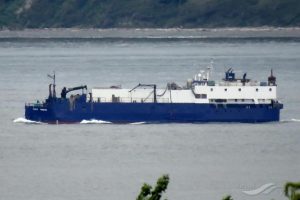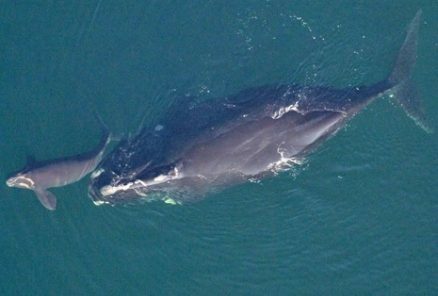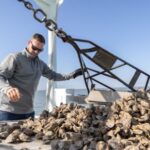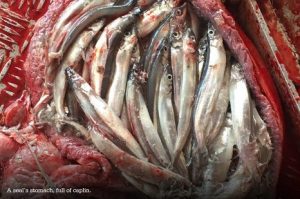Tag Archives: Fisheries Minister Joyce Murray
Canada proposes shutdown of troubled Maritime elver fishery in 2024
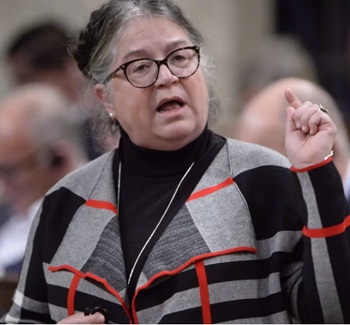 The federal government has served notice it intends to close the commercial fishery for baby eels, or elvers, in the Maritimes this year — six weeks before the season is set to open. Minister of Fisheries and Oceans Diane Lebouthillier informed licence holders Tuesday and gave them until Feb. 23 to respond. Lebouthillier said there was not enough time for the Department of Fisheries and Oceans (DFO) to implement enhanced “access for Indigenous communities, a new regulatory framework to regulate and licence the possession and export of elvers, and a suite of operational changes to the management of the elver fishery.” “Based on all the above, it is my view that it is not possible to have a safe and sustainable elver fishery in 2024, and therefore the fishery should not be opened,” Lebouthillier wrote. more, >>click to read<< 16:46
The federal government has served notice it intends to close the commercial fishery for baby eels, or elvers, in the Maritimes this year — six weeks before the season is set to open. Minister of Fisheries and Oceans Diane Lebouthillier informed licence holders Tuesday and gave them until Feb. 23 to respond. Lebouthillier said there was not enough time for the Department of Fisheries and Oceans (DFO) to implement enhanced “access for Indigenous communities, a new regulatory framework to regulate and licence the possession and export of elvers, and a suite of operational changes to the management of the elver fishery.” “Based on all the above, it is my view that it is not possible to have a safe and sustainable elver fishery in 2024, and therefore the fishery should not be opened,” Lebouthillier wrote. more, >>click to read<< 16:46
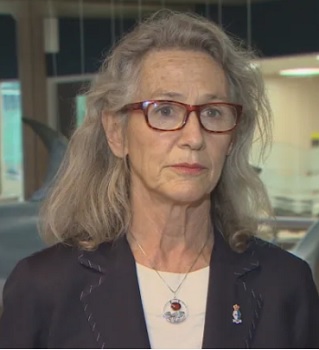
Alaskans poaching Canadian salmon top concern for federal fisheries minister
American fishing boats catching threatened Canadian salmon was flagged as a top concern for federal Fisheries Minister Joyce Murray before meeting with the U.S. ambassador to Canada in March. Over the past decade, and especially in 2021 — commercial fisheries in southeast Alaska have intercepted high numbers of Canadian salmon, particularly threatened sockeye stocks from the Nass, Skeena and Fraser rivers in B.C., the document said. The long-term rebuilding of threatened Pacific salmon stocks is a key objective for Canada, which is concerned about the potential impact a number of Alaskan fisheries are having on those stocks, the document said. >click to read< 10:47
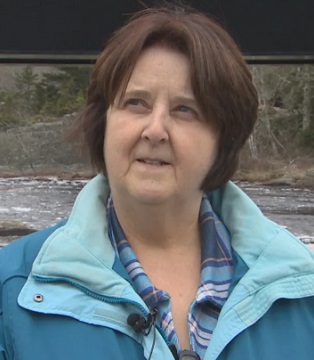
Striking fishery officers stand aside as poaching continues for lucrative baby eels
“Our net should be here, not some illegal fisherman,” says Brenda Golden, a co-owner of Wine Harbour Fisheries. Golden is looking under the Liscomb River bridge where a fine mesh net supported by floats stretches into the black foamy water. Hoping to have the net removed, Golden’s daughter reported it to the local Department of Fisheries and Oceans on Tuesday. Fisheries officials did not provide a response when asked about this incident. Nor to questions about the impact of the ongoing Public Service Alliance of Canada strike on its ability to rein in widespread illegal harvesting. >click to read< 07:15

Fisheries Department scrambled to claw back ‘ill-timed’ lobster tweet during Fiona
Some people can’t see the forest for the trees. Others can’t see the hurricane for the lobsters. On Sept. 24, around 9 a.m. Atlantic time, a few hours after Hurricane Fiona had slowed slightly into a post-tropical cyclone and slammed into Nova Scotia, the federal Fisheries Department issued two preplanned posts on Twitter and Facebook. The first urged everyone to avoid the coastline and stay safe. The second warned them off helping themselves to wayward lobsters. “As well, if you find lobsters washed up on the shore after the storm, remember it is illegal to harvest them,” it read. “Simply leave them there.” >click to read< 10:17
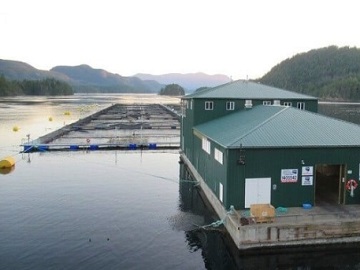
Canada Shuts Down 15 Fish Farms in B.C., Citing Risks to Wild Salmon
After years of concerns over the impact of aquaculture on wild sockeye salmon, Canada’s fisheries department has decided not to renew the operating permits of 15 Atlantic salmon farms in an environmentally sensitive area of British Columbia. In a news release, Fisheries Minister Joyce Murray noted that B.C.’s salmon runs are in “serious, long-term decline,” and some are at risk of collapse if action is not taken. Ten years have passed since the Cohen commission’s report, and more recent research indicates that the diseases associated with salmon-farming may have an impact on wild salmon in general and on Fraser River salmon smolts in particular. >click to read< 16:00
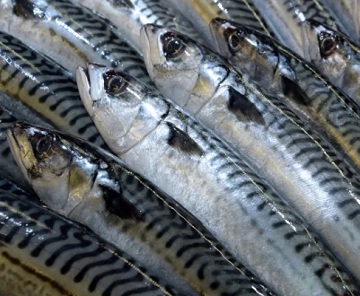
U.S. announces reduced East Coast commercial mackerel quota for 2023
The United States will proceed with a commercial fishery of the depleted East Coast mackerel stock it shares with Canada in 2023. The U.S. quota was released this week, putting pressure on Canada which has yet to decide whether it will continue a total moratorium it imposed in 2022 to help rebuild the population. The National Oceanic and Atmospheric Administration, the U.S. equivalent of the Fisheries and Oceans Canada (DFO), announced on Tuesday a total allowable catch of 3,639 metric tonnes. It was 27 per cent cut from 2022 in recognition that the transboundary stock remains in trouble and is overfished. >click to read< 19:01

Canada proposes 62 fish stocks for sustainability protection
The Department of Fisheries and Oceans has proposed adding 62 stocks to a regulatory list that binds the minister to rebuild them if they become depleted. In April the first batch of 30 was added. On Oct. 19 the department released a second batch of 62 stocks for public consultation. Comments close Dec. 19. Most stocks in the second batch are considered healthy, but candidates also include three stocks in trouble: cod and herring off southern Nova Scotia and yellowtail flounder in the Gulf of St Lawrence. Speaking to an Oceana conference on restoring fish populations in Ottawa last week Fisheries Minister Joyce Murray pledged to work toward that goal. >click to read< 10:07

Feds tight-lipped on seal summit in Newfoundland
Five months after Canada’s Fisheries and Oceans minister Joyce Murray responded to the Atlantic Seal Science Task Team (ASSTT) report by saying she would hold a summit on seals there are few details about the event, other than the dates. The summit is being held in St. John’s, N.L., Nov. 8 and 9. So far there’s no word on the location of the summit, the lineup of speakers or panelists, or an agenda for the two days. A Sept. 23 release from the  minister’s office offers very little information. That worries Bob Hardy, who was a member of the ASSTT. His main concern is that DFO appears to have organized the summit with little if any input from industry or stakeholders. >click to read< 15:53
minister’s office offers very little information. That worries Bob Hardy, who was a member of the ASSTT. His main concern is that DFO appears to have organized the summit with little if any input from industry or stakeholders. >click to read< 15:53

Commercial fishers and wild salmon advocates celebrate large returns to B.C. waters
Mitch Dudoward has worked in the salmon industry for more than 40 years and says fishing on the Skeena River in northwest B.C. has never been better. “This is the best season I can recall in my lifetime with the numbers we are catching,” said Dudoward, who recently completed a big sockeye haul aboard his gillnetter Irenda. Meanwhile, Bob Chamberlin, chairman of the First Nations Wild Salmon Alliance, said thousands of pink salmon are in Central Coast rivers after years of minimal returns. The strong run comes two years after the closure of two open-net Atlantic salmon farms in the area. “We got them removed and two years later we went from 200 fish in the river to where we have several thousand to date. In our mind and knowledge that is a really clear indicator.” >click to read< 10:41
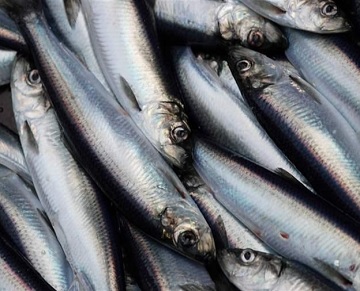
Management Plan Released for Atlantic Herring in Southwest Nova Scotia and the Bay of Fundy
Atlantic herring is a vital species in Atlantic Canada. As one of the largest commercial fisheries in Atlantic Canada, the Southwest Nova Scotia / Bay of Fundy herring stock directly or indirectly employs more than 1,000 people in rural Nova Scotia and New Brunswick and contributes over $140 million to the local economy. Atlantic herring is also an important source of bait for other commercial fisheries, such as lobster and snow crab. Despite a number of measures taken in recent years to encourage rebuilding, the Southwest Nova Scotia / Bay of Fundy Atlantic herring stock remains in the critical zone. Stronger sustainable management actions are needed to protect this important species and return it to abundance. >click to read< 13:29

We’koqma’q gets federal approval for moderate livelihood fishery
We’koqma’q First Nation in Cape Breton reached an understanding with the Department of Fisheries and Oceans this week. Certain harvesters can now fish lobster and sell the harvest during the established 2022 commercial seasons in Lobster Fishing Areas 27 and 31A, which run until mid-July and the the end of June, respectively. “Our harvesters continued to voice how they wanted to be able to exercise their Treaty Rights safely and they are excited to be able to provide for their families and our community through exercising their inherent rights,” said We’koqma’q Chief Annie Bernard-Daisley in a release Friday. Both fishing areas are off the Cape Breton coast. There will be a limit of 210 traps per fishing area, according to a DFO release. > click to read < 14:18
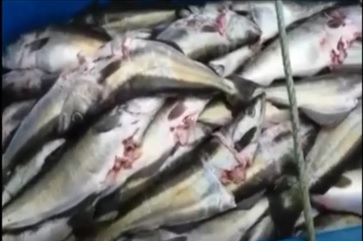
Seal summit slated for the fall in St. John’s
More research is needed on the impact of seals on dwindling east coast fish stocks, federal Fisheries Minister Joyce Murray said Thursday,,, Speaking outside a seafood processing plant, Murray drew applause when she said she knows “seals eat fish.” “So, that’s the reason we need to better understand the impact they are having on our fish stocks,” she said. The minister said that as a first step, her department will host a seal summit this fall. “That will be to broaden engagement on Atlantic seals and bring stakeholders together to discuss approaches for science, market development and management,” she said. >click to read< 12:36
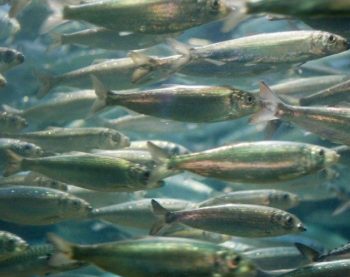
Proposed herring quota would put lobster fishermen in a pinch for bait
The Department of Fisheries and Oceans is pursuing a commercial quota on herring for areas off Southwest Nova Scotia and the Bay of Fundy. DFO is proposing the use of a new stock modeling process, that could see quotas slashed to 13,050 tonnes from 35,000 tonnes, a 62 per cent reduction. Commercial herring fishing operators have already voiced their opposition to those plans, including Bay of Fundy Herring Industry who in a statement proposed a compromise of lowering their quota to 25,000 tonnes from 35,000 tonnes for the 2022 season. >click to read< 19:52
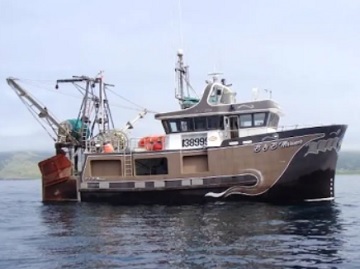
Slashed shrimp quotas cause worries for Newfoundland and Labrador captains
A couple weeks ago Brad Genge made a million-dollar bet on the future of shrimp. He bought another shrimp licence. Now he can only hope it pays off. Genge has been fishing out of Flower’s Cove, a community on Newfoundland’s Great Northern Peninsula, with his father Ren for about three decades. This is the 16th season for their longliner, B and B Mariner. And when another captain decided to retire and sell his enterprise, Genge saw it  as a chance to grow his own. These days the only way to get more shrimp quota is to buy it from someone willing to sell. Genge has invested heavily to secure three shrimp quotas in the Gulf, in an area near Port aux Choix, and four in the northern zone, off St. Anthony. It comes with risk, considering the shrimp biomass and the quotas have been declining. >click to read< 15:15
as a chance to grow his own. These days the only way to get more shrimp quota is to buy it from someone willing to sell. Genge has invested heavily to secure three shrimp quotas in the Gulf, in an area near Port aux Choix, and four in the northern zone, off St. Anthony. It comes with risk, considering the shrimp biomass and the quotas have been declining. >click to read< 15:15

DFO: ‘no plan’ to cut commercial lobster catches to implement treaty fishery
The issue has swirled through Maritime coastal fishing communities since the federal government relaunched a voluntary commercial licence buy-back program last year to make room for more Mi’kmaw access, so far without success. The departmental statement followed a response from Fisheries Minister Joyce Murray to Conservative fisheries critic Rick Perkins during Question Period Monday. “DFO sources tell me the minister was about to expropriate 15 per cent of lobster traps from licence holders, without compensation, to give to First Nations,” Perkins said Monday. “This would be devastating for these fishermen. >click to read<13:43

Political pressure for an early opening of the Gulf crab fishery
Quebec urges Ottawa to authorize the opening of the snow crab fishing season as soon as possible in the southern Gulf of St. Lawrence, in which crabbers from the Magdalen Islands, Gaspé and New Brunswick participate. In a letter sent on March 28 to his federal counterpart Joyce Murray, a copy of which was obtained by the QMI Agency, the Quebec minister responsible for fisheries, André Lamontagne, points out that the early opening of the snow crab fishery in the Gulf is, so far, “the most effective adaptation measure that reconciles the protection of Right whales and fishing activities”. >click to read< 10:17
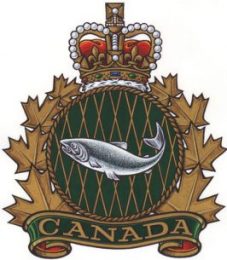
Nova Scotia: Mackerel closure causes bait concerns as fishermen prepare for lobster season
Minister of Fisheries and Oceans (DFO) Joyce Murray announced on March 30 that there would be no directed commercial or bait fishing for southern gulf spring herring and a closure of the Atlantic mackerel commercial and bait fisheries this year in Atlantic Canada and Quebec. Guysborough County Inshore Fisherman’s Association Manager Ginny Boudreau’s first concern was about what was not covered in the DFO news release: loss of licences and lack of compensation. Those licenses have essentially been taken away from them…How you can just take thousands of licences out of the commercial fishery and not even a mention of that in the news release?… that’s huge,” >click to read< 08:41
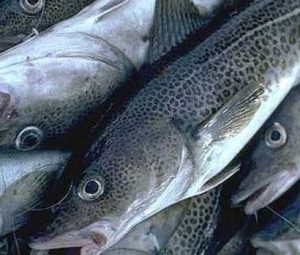
Canada and France reach agreement with total allowable catch rollover of 3Ps cod
Today, the Minister of Fisheries, Oceans and the Canadian Coast Guard, the Honourable Joyce Murray, announced that an agreement has been reached with France regarding 3Ps cod for the 2022-23 fishing season. Both countries intend to roll over the current total allowable catch (TAC) of 1,346 tonnes. Canada and France (in respect of Saint Pierre and Miquelon) co-manage fish stocks, including cod, in the 3Ps zone off the south coast of Newfoundland and Labrador. Under the Procès-Verbal Agreement, the two countries meet annually to negotiate management measures, including the TAC of these shared stocks in the North Atlantic. >click to read< 20:35

Rising fuel, bait prices could eat into profit margins
Lobster fishers have had to contend with the rising costs of doing business for years, but this season presents a set of circumstances perhaps without compare. Fuel prices are higher than they’ve ever been on PEI and that will have a direct impact on fishers, especially the ones who sail further out from shore. Throw in rising bait prices driven by quotas and feeding predators, and insurance costs, and it could take a sizable big bite out of profit margins. “It’s going to be different from last year for sure. The cost of everything is going up,” said Naufrage lobster fisherman Lucas Lesperance. He hopes those pressures will create a strong price throughout the season. Mr Lesperance said seals are becoming more of a nuisance than ever, chowing down on bait species like herring and mackerel. A seal hunt would certainly help, he said. >click to read< 10:07

Higher Snow Crab Quota in Newfoundland and Labrador in 2022
DFO’s management practices in recent years, supported by evidence-based science advice, favourable ocean conditions, and the stewardship of local harvesters, have rejuvenated the snow crab stock in most areas throughout the Province. Improvements in the stock are likely to continue in the short-term and point to continued growth and a sustainable fishery into the future. For these reasons, Fisheries Minister Joyce Murray, is pleased to announce that the 2022 total allowable catch for the Snow crab fishery in Newfoundland and Labrador will be 50,470 tonnes. This represents a 32 per cent increase from 2021. >click to read< 12:05
 Snow crab quota jumps 30% for 2022 season – For fishermen like Aaron Ferriera, the quota increase is welcome news. “For a lot of fishermen, crab season is the only thing they fish all year-round, especially now with the price of everything skyrocketing. It’s a good thing for sure,” he said. And the cost of doing business is going up. >click to read< 17:13
Snow crab quota jumps 30% for 2022 season – For fishermen like Aaron Ferriera, the quota increase is welcome news. “For a lot of fishermen, crab season is the only thing they fish all year-round, especially now with the price of everything skyrocketing. It’s a good thing for sure,” he said. And the cost of doing business is going up. >click to read< 17:13
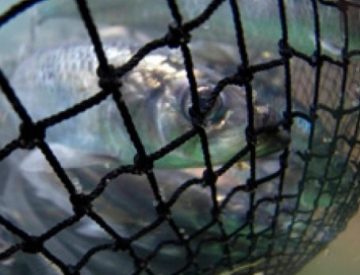
Ottawa announces closure of Atlantic mackerel, bait fisheries to restore stocks
Fishers on the East Coast are expressing their disappointment with Ottawa after DFO closed the Atlantic mackerel and commercial bait fisheries, citing concerns that dwindling stocks have entered a “critical zone.” The department said in a release Wednesday it was taking “urgent action” to help preserve the stock of southern Gulf spring herring and Atlantic mackerel with the closures in Atlantic Canada and Quebec. Fisheries Minister Joyce  Murray said she recognizes many harvesters depend on the fisheries, and she promised to work with them and others in the industry to preserve the stocks. Fishers in the sector, however, want the decision reversed. Martin Mallet, “It’s going to have a major impact — an atomic bomb impact — on our whole East Coast fishery, from Newfoundland to Quebec to southwest Nova Scotia,” >click to read< 18:52
Murray said she recognizes many harvesters depend on the fisheries, and she promised to work with them and others in the industry to preserve the stocks. Fishers in the sector, however, want the decision reversed. Martin Mallet, “It’s going to have a major impact — an atomic bomb impact — on our whole East Coast fishery, from Newfoundland to Quebec to southwest Nova Scotia,” >click to read< 18:52
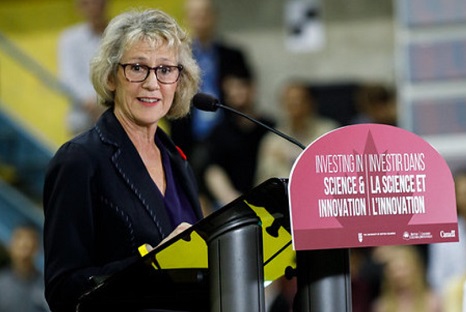
Harvesters Warn of ‘Dire Effects’ as Minister Aims to Protect Fish Stocks from Climate Disruption
A recent appearance by Fisheries Minister Joyce Murray at an industry annual meeting has set off a sea squall of controversy, with harvesters and unions warning of the “dire social and economic effects” of federal catch limits and Murray stressing her interest in keeping fish stocks sustainable in an era of climate disruption. The unions representing fish harvesters on Canada’s east and west coasts claim her remarks to the annual general meeting of the Canadian Independent Fish Harvesters Federation (CIFHF) reflected a “singular focus on ocean conservation” at the cost of workers whose livelihoods rely on the fishery industry. >click to read< 15:38

N.S. MP Rick Perkins grilled federal fisheries minister over clawback of COVID-19 help paid to fishermen
Conservative fisheries critic Rick Perkins grilled Fisheries Minister Joyce Murray Thursday over her department’s clawback of COVID-19 assistance paid to thousands of fishermen, but the exchange may be more remembered for his “confrontational and aggressive” questions and interruptions than the answers. “Six years I’ve been a parliamentarian, I have never seen a more rude member of parliament to a witness. Ever,” said Dartmouth Liberal MP Darren Fisher. “He was extremely rude.” Perkins pressed Murray at the parliamentary fisheries committee meeting on DFO’s decision to claw back a fish harvester benefit. The benefit was paid to crew members across Canada who are paid a share of the catch. >click to read< 11:01
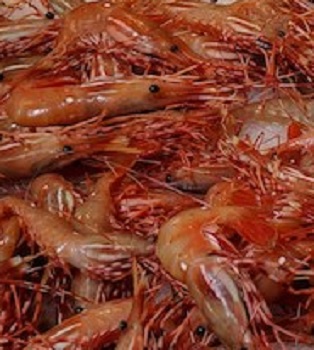
B.C. fishers celebrate DFO announcement allowing spot prawn ‘tubbing’ to continue
The announcement Monday by Fisheries Minister Joyce Murray is an about face from an announcement less than a year ago when DFO served notice it was making tubbing illegal. “This is huge,” said Mike Atkins, executive director of the Pacific Prawn Fishermen’s Association. For decades, the celebrated B.C. fishery has relied on small boat fishers freezing just-caught spot prawns in tubs to preserve them for transport to local markets. Instead of outlawing the practice, the new 2023 regulations will limit the packaged volume of tubbed prawns to 710 millilitres or less. It will also require that all packaging material be transparent. >click to read< 08:26

Fisheries Minister Discards Science in Pacific Herring in the Strait of Georgia Decision
“Shocked and devastated,” says the Herring Conservation and Research Society’s Rob Morley of Fisheries Minister Joyce Murray’s decision to reduce the harvest rate on Pacific herring in the Strait of Georgia to 10% from the long-standing, science-validated 20%. “Fisheries management decisions should be based on solid peer-reviewed science not the number of signatures on a petition.” To make matters worse, he added, “DFO will take 85% of the likely landed value in seine licence fees that were set in the 1970s. How are harvesters supposed to make a living?” >click to read< 11:38

Fisheries Minister Joyce Murray sticking to plan to shut down open-net fish farms
Ms. Murray, a long-time Liberal MP known for her interest in environmental issues, was named Fisheries Minister in October after the former minister, Nova Scotia MP Bernadette Jordan, lost her seat in the October federal election. Ms. Murray’s appointment comes as some West Coast wild salmon species are teetering on the edge of extinction and the impacts of November storms on fish and habitat are just beginning to be tallied. Ms. Murray said her priorities as minister will include following through on strategies begun under Ms. Jordan’s tenure, including dealing with the controversial issue of fish farms. >click to read< 07:50

Moratorium sought on herring fisheries; critical for salmon
Conservationists are calling for a moratorium on both the upcoming food-and-bait herring fishery in the Strait of Georgia and next season’s roe herring fishery,,, They fear herring living year-round in the Strait of Georgia are at risk due to fishing.,, Conservancy Hornby Island said Strait of Georgia herring stocks are little understood. The organization is among groups urging Fisheries Minister Joyce Murray to impose a moratorium on the fish-and-bait and the roe herring fisheries to rebuild stocks coastwide.,, Rob Morley, chairman of B.C.’s herring industry advisory board, has a different view of herring fisheries in the strait, saying scientific analysis and modelling show it’s a sustainable fishery with healthy stocks. “It is our feeling that it is a very well-managed sustainable fishery.” >click to read< 16:06






